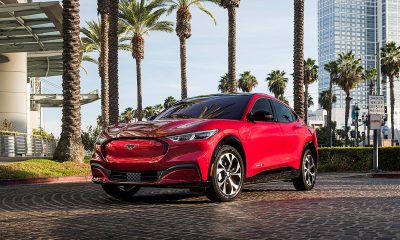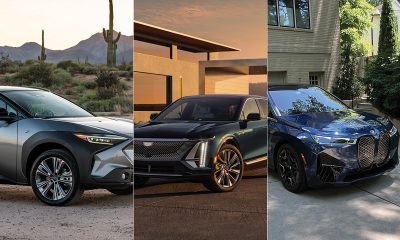Autos
Crazy cool coupes
Subaru BRZ, Mustang Ecoboost offer muscle-car moxie
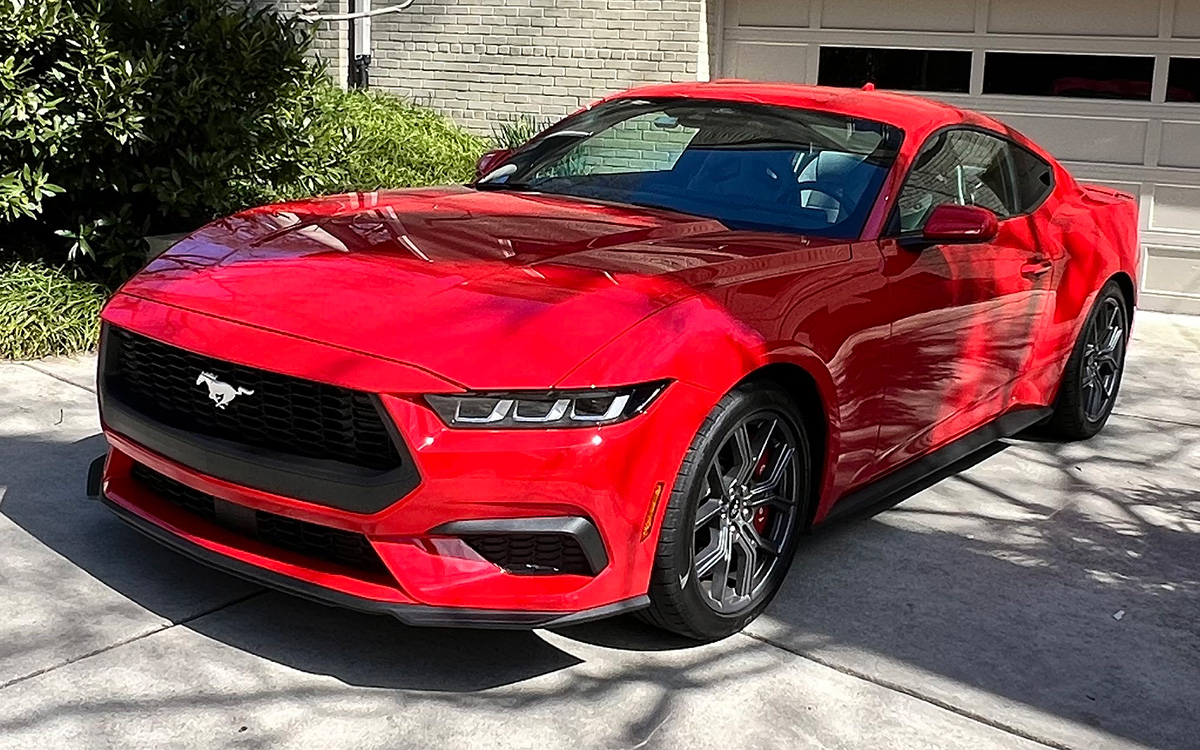
I’ve written before about my first car: a used-but-pristine sports coupe, bought by mom for my 16th birthday. Recent test drives in two cool coupes brought back a flood of fond memories from those gawky teenage years.
But while a two-door ride may not be the most practical vehicle for a decades-older me, it’s easy to appreciate the fast-and-furious allure.
After all, buying a sports car is often associated with a midlife crisis. So who knows, there still may be room—or vroom!—for a sportster in my future.
FORD MUSTANG ECOBOOST
$33,000
MPG: 22 city/33 highway
0 to 60 mph: 5.6 seconds
Cargo space: 13.5 cubic feet
PROS: Muscle-car moxie. Surefire handling. Tech-laden cabin.
CONS: Snug backseat. Pricey options. Intra-model competition.
IN A NUTSHELL: Introduced in 1964, Ford hoped to sell 100,000 Mustangs annually. But by tapping into the Boomer zeitgeist, almost 700,000 units were sold the first model year. Mustang is now the automaker’s longest running nameplate and the best-selling sports car in the world.
This was the original “pony car,” with a high-test engine, long hood and affordable price tag. Luckily, the latest Mustang — recently redesigned and in its seventh generation — has stayed true to its roots.
So, too, has the EcoBoost engine. Developed 15 years ago as a more enviro-friendly powerplant, these turbos often have been used on base models. The latest EcoBoosts — there are more than half a dozen — are 20% more fuel efficient and produce 15% fewer emissions than other Ford engines. And while the original could barely eke out 122 horsepower, today’s four-cylinder EcoBoost in the Mustang delivers 315 horsepower.
The only bummer: no manual transmission. For that, you need to dig deeper into your wallet — much deeper. The Mustang GT, with a 486-horsepower V6, costs $50,000. And the boffo Dark Horse trim level, boasting a 500-horsepower V8, is $62,000. These MSRPs are without any options, which add up quickly.
But the Mustang EcoBoost still offers plenty of features: LED headlights, keyless entry, smartphone integration and Wi-Fi hotspot. Various driving aids—blind-spot monitor, rear-parking sensors, lane-keeping assist, forward collision warning with automatic braking—are all standard.
The stodgy interior has been replaced with a mod, techno cabin with better upholstery and soft-touch surfaces. Various configurations of the digital instrument panel can be viewed at the whim of the driver. And the larger, 13.2-inch infotainment screen is user-friendly.
Such upgrades remind me of the Mustang Mach-E. Though purists initially derided the use of the Mustang label on a four-door electric SUV, the Mach-E was the fourth best-selling EV last year. Similar in price and acceleration to a traditional gas-powered ‘Stang, the Mach-E is arguably just as fun. But add in the retro-cool factor, and there’s no comparison.
SUBARU BRZ
$33,000
MPG: 20 city/27 highway
0 to 60 mph: 6.6 seconds
Cargo space: 6.3 cubic feet
PROS: Sporty. Zippy. Fits anywhere.
CONS: Low ground clearance. Bouncy. Tiny trunk.
IN A NUTSHELL: The Subaru BRZ may not have the aura of a Ford Mustang, but this compact coupe still checks plenty of boxes.
Porsche-like styling. Precision steering. Punchy power. Even pricing is a plus, with a top trim level less than $37,000.
Despite Lilliputian dimensions — the BRZ is a third smaller than a Mustang — there’s still more passenger room than in the rival Miata. As a tallish driver, I appreciated the unexpected amount of headroom and legroom in the front seats.
But trunk space is another matter. With less than half the stowage space of a Mustang, don’t expect to haul more than a few grocery bags. And while you literally have to climb into certain jumbo SUVs and pickups, the opposite is true with the low-slung BRZ. These seats are so close to the chassis that it feels like sitting in a go-kart. Luckily, once I scooched myself down into the cabin, it didn’t take long to get used to the seating position.
Three trim levels, all with rear-wheel drive, dual-zone climate control, push-button start and Subaru’s renowned EyeSight package: adaptive cruise control, automatic high-beam headlights, lane-departure warning and automatic emergency braking. Step up to the Limited version for larger wheels, heated seats, fancier upholstery, extra safety gear and a better sound system. The performance-oriented tS comes with sport-tuned suspension, premium Brembo brakes, dark gray metallic wheels and sporty interior stitching.
Only one engine is available: a very capable 228-horsepower four cylinder. My test car also came with the six-speed manual transmission, which added more gusto.
With such a short wheelbase, the ride is firm but controlled. And keeping weight down on the BRZ must have meant installing less insulation. After all, there’s some noticeable road noise, especially on the freeway. But then, you also hear the constant purring and revving of the engine, which is music to the ears of sports-car aficionados.
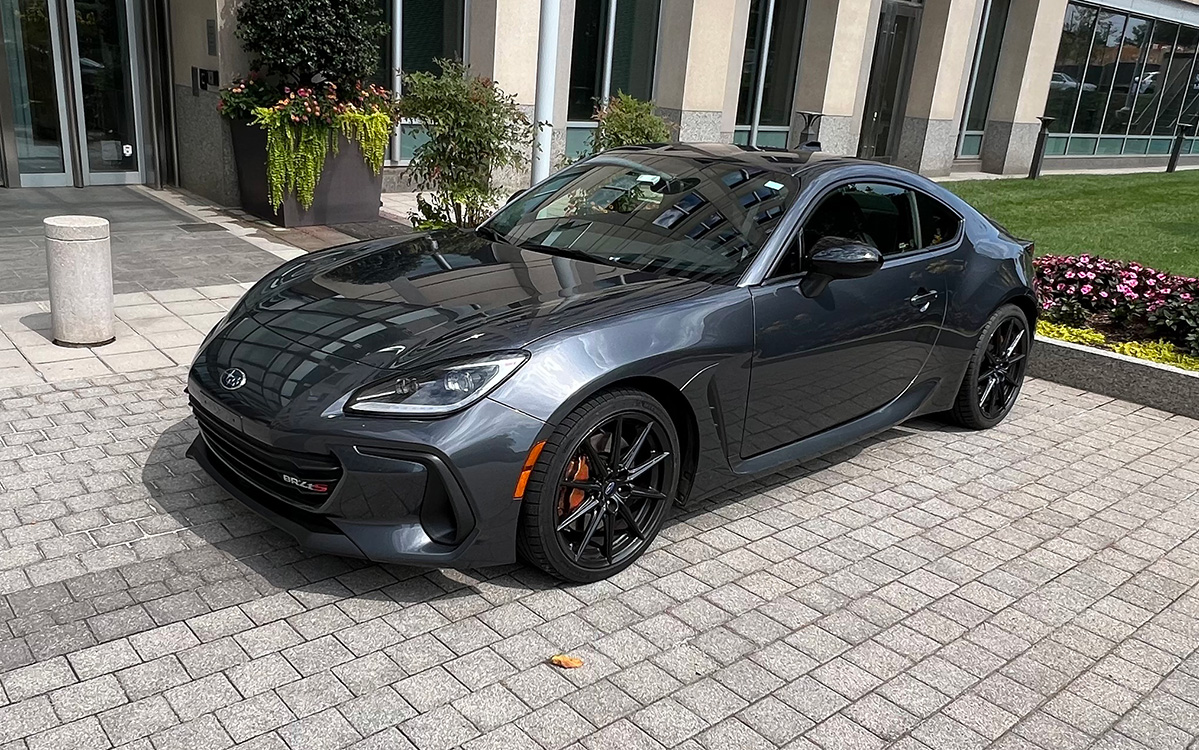
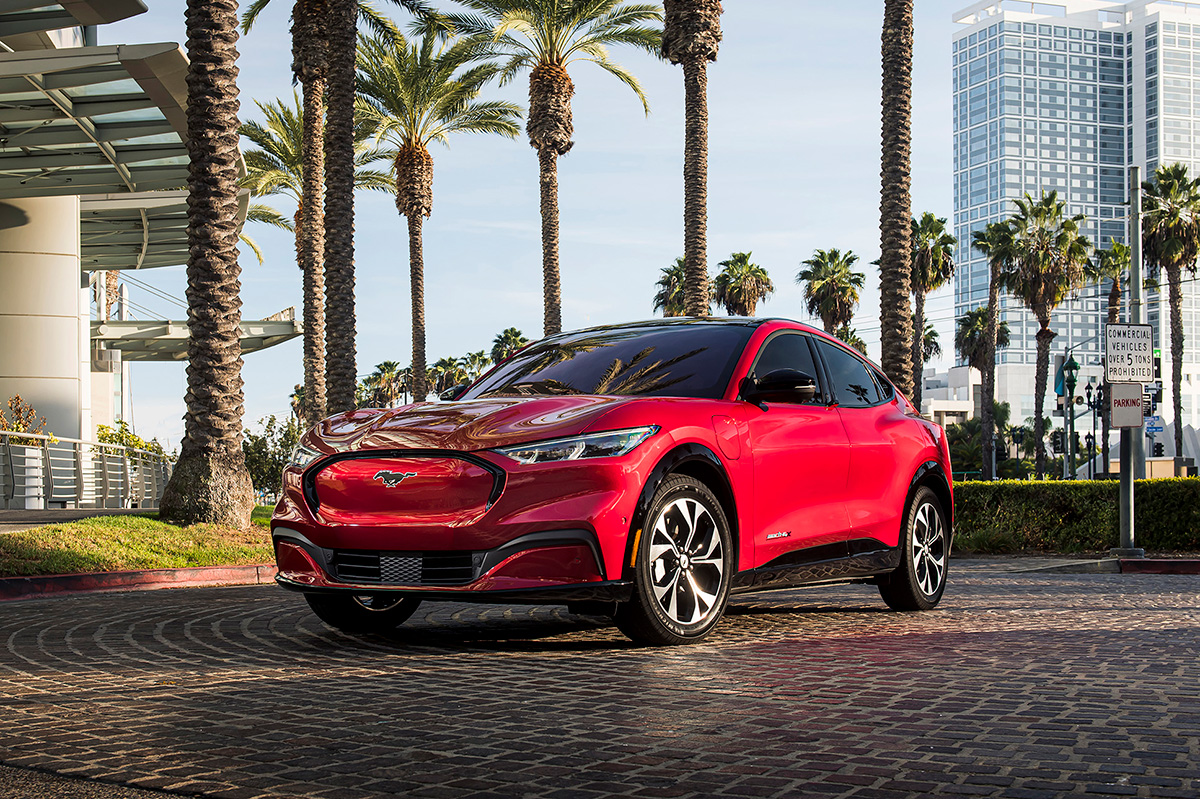
Looking to roll into something new? With all the buzz about 25% tariffs, it’s the perfect time to grab a new ride before prices soar—especially for electric vehicles, which may soon wave goodbye to those oh-so-attractive federal tax credits. Whether you are an eco-conscious commuter or just need a chariot for weekend getaways, these three green machines offer some serious swagger.
FORD MUSTANG MACH-E PREMIUM
$42,000
Range: 250-300 miles (depending on battery pack)
0 to 60 mph: 5.2 seconds
Cargo space: 29.7 cu. ft.
PROS: Zippy. Sporty feel. Ample battery range.
CONS: Bit bumpy over potholes. Limited seat adjustments.
IN A NUTSHELL: With sleek curves and a design that’s hotter than a drag queen’s heels on the runway, the Ford Mustang Mach-E blends both power and flair. The exterior colors are vibrant and unapologetically bold, just like the rainbow after a storm. Three trim levels, but opt for the spiffy Premium version—which was what I drove and is a nice step up from the $37,000 base model. It also costs a lot less than the gutsy GT, which tops $55,000.
Inside, the Mach-E is like driving a chic lounge on wheels. Toggling through the 15.5-inch touchscreen feels like navigating through the latest TikTok trends. A panoramic glass roof and faux-leather upholstery come standard, but assorted add-ons—standard features with the Premium trim—include hands-free power liftgate, multicolor ambient lighting and 10-speaker Bang & Olufsen stereo. There’s also plenty of space for all the essentials: totes, coats and besties.
And let’s not forget about battery range—there’s enough juice here to take you through a whole day of driving without needing a recharge. With Ford’s fast-charging network, it’s easy to be powered up quicker than you can say, “Ride ‘em, cowboy!” Well, almost.
How popular is this EV, which looks more like a hot hatchback than an SUV? Last year, sales spiked 27% and outsold the iconic gas-powered Mustang. So yes, the Mach-E Premium isn’t just any vehicle—it’s an experience that’s, well, electric.
KIA SPORTAGE PHEV X-LINE PRESTIGE
$44,000
MPGe: 84 city/highway combined
0 to 60 mph: 7.1 seconds
Cargo space: 39.6 cu. ft.
PROS: Comfy. Comely cabin. Oodles of passenger room.
CONS: Clunky dual-use dashboard controls. Bit noisy interior.
IN A NUTSHELL: Next up: the 2025 Kia Sportage PHEV X-Line Prestige, a compact plug-in hybrid that combines style, strength and versatility into one dazzling package. If the Mach-E Premium is a glam EV star, I found the Sportage PHEV to be an SUV showstopper.
Under the hood, power comes from an electric motor and gas-powered backup, so you get the best of both worlds—whether cruising on green energy or unleashing your inner diva. The all-electric range is almost 35 miles, and all-wheel drive is standard—which helps keep things steady, no matter the weather.
Inside, it’s pure comfort. While there are two hybrid trim levels, even the base-model—the X-Line—is fairly loaded: LED headlights/taillights, dual-zone automatic climate control, remote start, power liftgate, nav system, wireless charging pad, smartphone integration and more.
For my weeklong test vehicle, I was spoiled with the X-Line Prestige, which is full of a ridiculous number of amenities and safety gear. Let’s just say the clever cabin design would make the folks at Ferrari blush. Oh, and thanks to the pristine acoustics from the Harmon Kardon audio, I could have sworn the cast of “Hamilton” was right there with me belting out each tune. “Blow Us All Away,” indeed.
MERCEDES AMG C 63 S E
$87,000
MPGe: 40 city/highway combined
0 to 60 mph: 3.3 seconds
Cargo space: 11.6 cu. ft.
PROS: Snazzy. Lightning fast. Haute handling.
CONS: Pricey. Quirky steering-wheel controls.
IN A NUTSHELL: Jonesing for an exciting, eco-friendly sedan? Then look no further than the Mercedes AMG C 63 S E plug-in hybrid, which gets the adrenaline pumping each time you slip behind the wheel.
Under the hood, there’s a staggering 671 horsepower—enough to leave competitors in the dust and make them more than a little jealous. This AMG-tuned Mercedes—the quickest C-Class ever—blasts from 0 to 60 mph in just 3.3 seconds, faster than your heart rate when seeing your next crush at a circuit party. And that’s not even the best part—the shapely contours of this sportster are as chiseled as Luke Evans’ check bones.
Inside, the cockpit is like a designer outfit made for a fab night out—high-quality material everywhere, as well as branded sport seats with top-tier upholstery and stitching. One downside: the steering-wheel controls, which look tasteful but can be a tad too touch-sensitive at times.
Still, this elegant ride exudes more than enough bells and whistles to maintain a constant state of euphoria.
Autos
Mad about Mercedes — and a Mini Countryman, too
These three spiffy SUVs not too basic, not too complicated
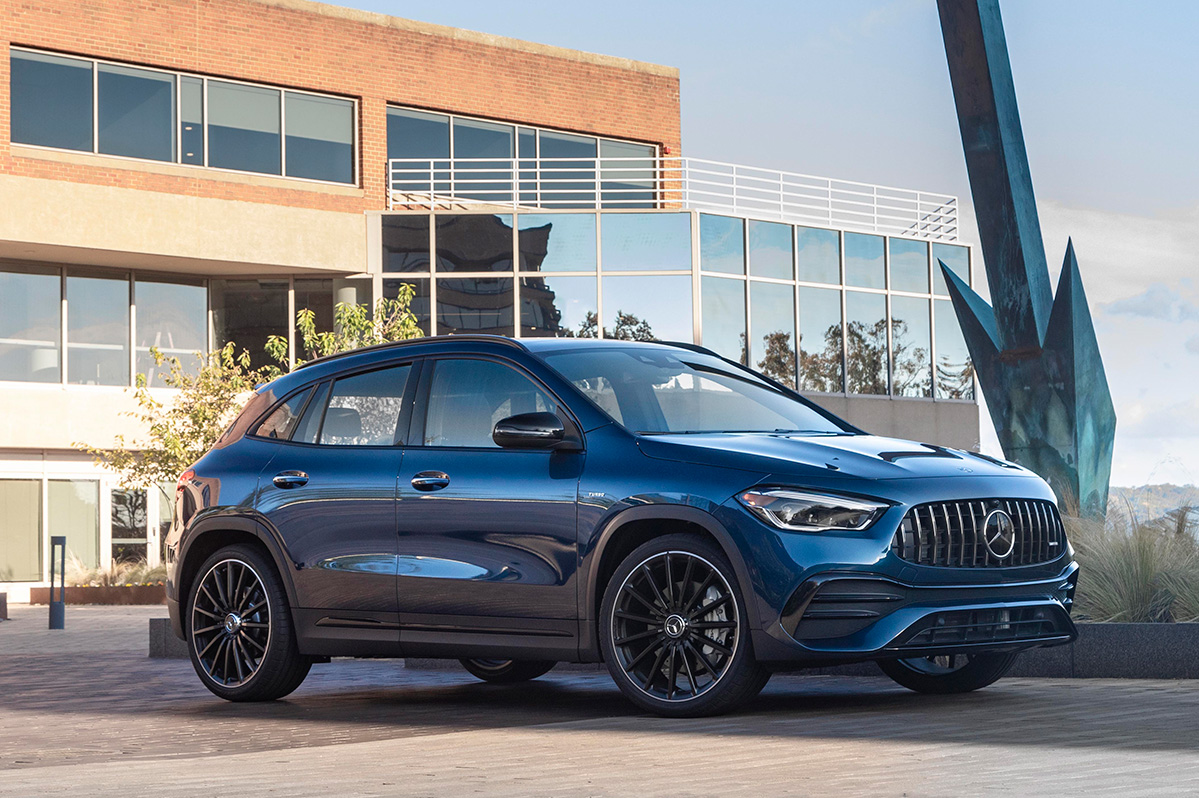
Not too basic, not too complicated. That’s what I enjoyed most about three spiffy SUVs recently. Call it the Goldilocks effect, but each ride—two Mercedes and a Mini Countryman—seemed just right. That’s a big plus in today’s world of extremes.
MERCEDES AMG GLA 35
$59,000
MPG: 22 city/28 highway
0 to 60 mph: 4.7 seconds
Cargo space: 15.4 cu. ft.
PROS: Affordable luxury, smooth suspension, zippy.
CONS: Bit noisy inside, so-so storage, costly options.
IN A NUTSHELL: The subcompact GLA—the most affordable Mercedes sold in the U.S.—comes in two trim levels. With the average price of a vehicle topping $48,000, the base-model GLA 250 is a bargain at $43,000. On paper, the stats for acceleration, handling and braking look spot on. Ditto the fine amenities, including faux-leather seats, ambient lighting, wireless charging pad and power liftgate. Toss in numerous safety features—including forward-collision warning, blind-spot alert, an automated parking system—and what could be better? The answer is the sport-tuned AMG GLA 35, which is the vehicle I tested. Zippier, grippier and ritzier than its entry-level sibling, this saucy SUV is also pricier. And beware: The long list of options—such as head-up display, surround-view camera, illuminated door sills—can add up quickly. But oh, what a thrill. Stomp on the accelerator, and the GLA 35 scoots from 0 to 60 mph in just 4.7 seconds—a full two seconds quicker than the GLA 250. Along with a more powerful engine and all-wheel drive, there’s now a 48-volt hybrid-assist system. The GLC 35 also flaunts aggressive styling, including a sexy rear spoiler, large dual exhaust tips and bigger wheels. Fave feature: the flat-bottom, performance-oriented steering wheel with spiffy paddle shifters and a panoply of user-friendly buttons and dials.
MERCEDES AMG GLC 43 COUPE
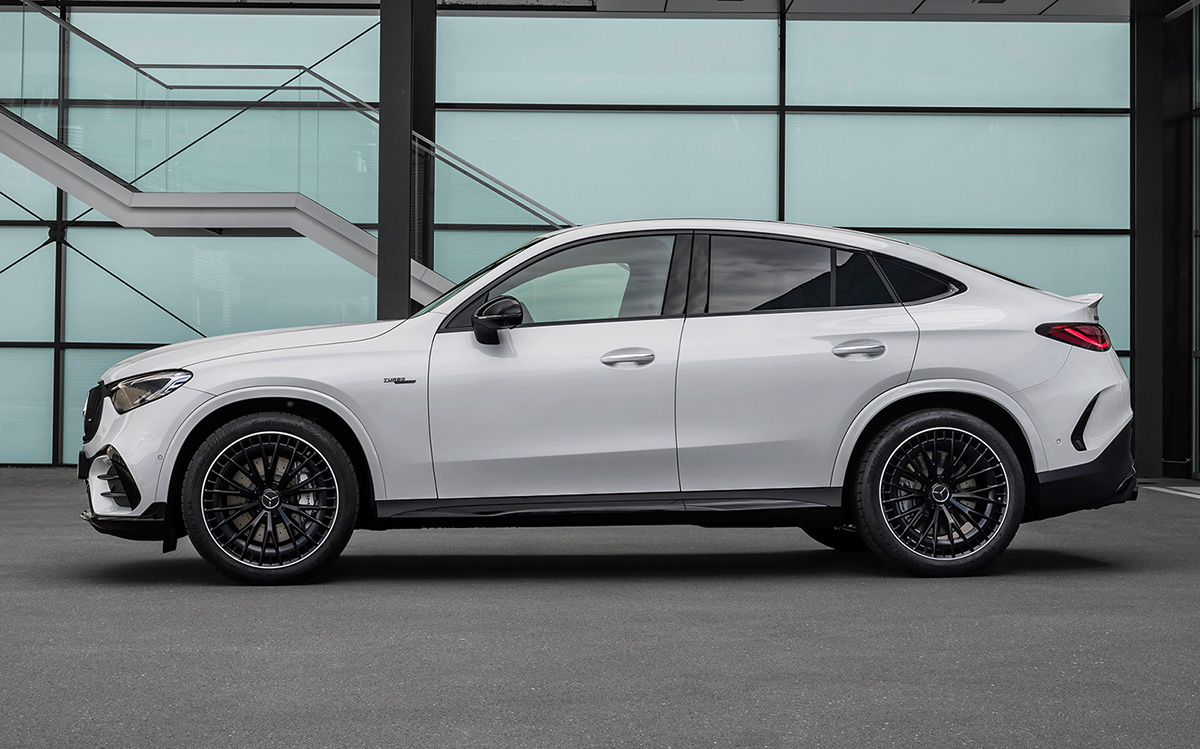
$70,000
MPG: 18 city/24 highway
0 to 60 mph: 4.7 seconds
Cargo space: 19.2 cu. ft.
PROS: Posh styling, potent power, quiet cabin.
CONS: Pricey, limited rear visibility, reduced cargo room.
IN A NUTSHELL: Stepping up from the baby Mercedes GLA, the larger GLC—though technically a compact—is 12 inches longer. What’s more, this hauler comes with choice of five trim levels. And you can choose from either a traditional square-back design or sloped coupe-like styling. Confused? Don’t be. Just trust that the AMG GLC 43 Coupe, which is really an SUV, checks all the boxes. There’s plenty of drama here, with a bulging snout and sinuous shape that any diva would love. There’s also plenty of power, with a gritty turbo that allows the GLC to accelerate just as fast as the much lighter GLA. And the interior is stunning: NASCAR-like bucket seats, gigantic infotainment touchscreen and reinforced window glass to better insulate the cabin. A clever nav system can project traffic and other info onto the head-up display on the windshield, and rear automatic braking helps anticipate and prevent a back-end collision. Sure, the low-slung roofline cuts into rear-seat headroom and cargo space. But for me, the sacrifice was worth it. After all, it’s hard to imagine any other glam-but-gutsy ride equally at home on a fashion runway or at the racetrack.
MINI COUNTRYMAN ALL4
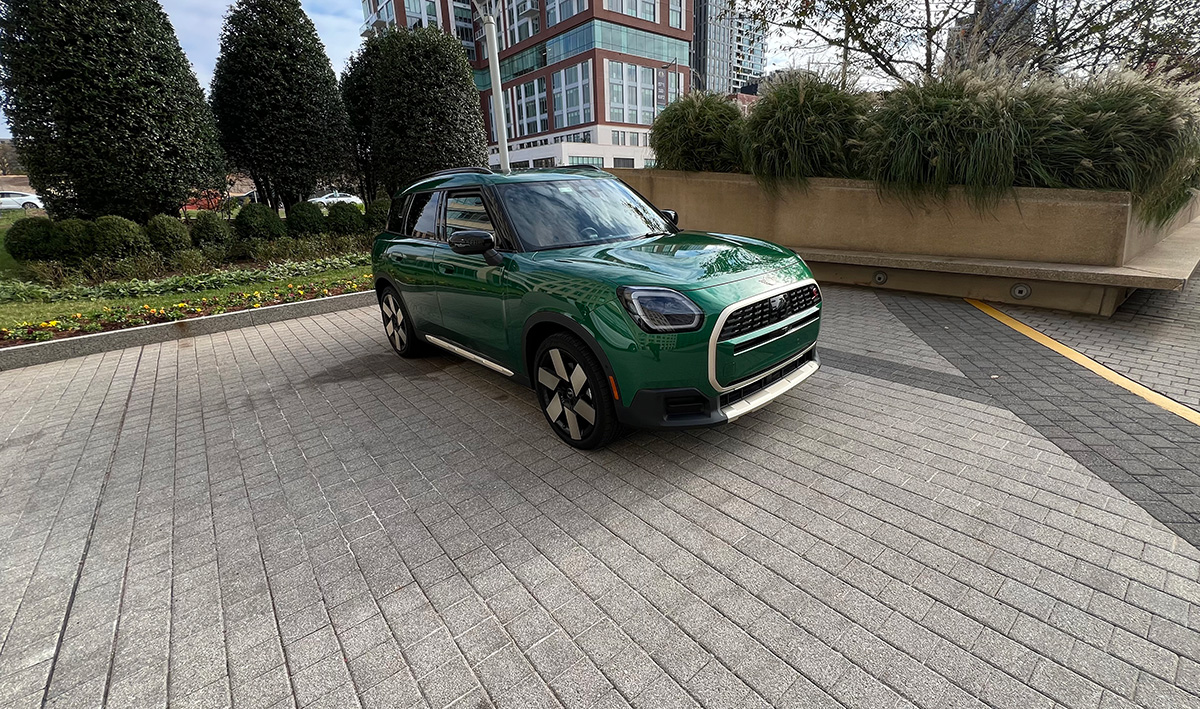
$40,000
MPG: 24 city/32 highway
0 to 60 mph: 5.9 seconds
Cargo space: 24.9 cu. ft.
PROS: Bigger, faster, better.
CONS: Almost too big, bit less playful, higher MSRP.
IN A NUTSHELL: Fully redesigned for 2025, the Mini Countryman enjoys a slew of up-market changes but retains some of its retro quirks. Larger than before, this latest model—with so much extra room for passengers and cargo—feels comfy and spacious. Almost too much so. At first blush, I was reminded of a Subaru Forester or Outback. Both fine vehicles, but without that familiar Mini vibe. Luckily, the steering wheel, head-up display and large Frisbee-shaped infotainment display all channel the previous Countryman. Ditto the overall exterior, which now boasts a redesigned grille, sleeker headlights and refined rear treatment. Yet I missed seeing all the toggle switches and some other playful touches. In their place, though, is a groovy dashboard with nifty LED lighting that changes colors based on the driving mode. While some digital readouts initially seemed too techy, they ended up being very user friendly. And there are two standout features: a huge panoramic moonroof and the use of sustainable materials for the carpeting, seats and such.

Electric vehicles are charging ahead, despite recent saber rattling by politicians. After testing a bevy of EVs, the rides below certainly got my motor running.
BMW iX (midsize SUV)
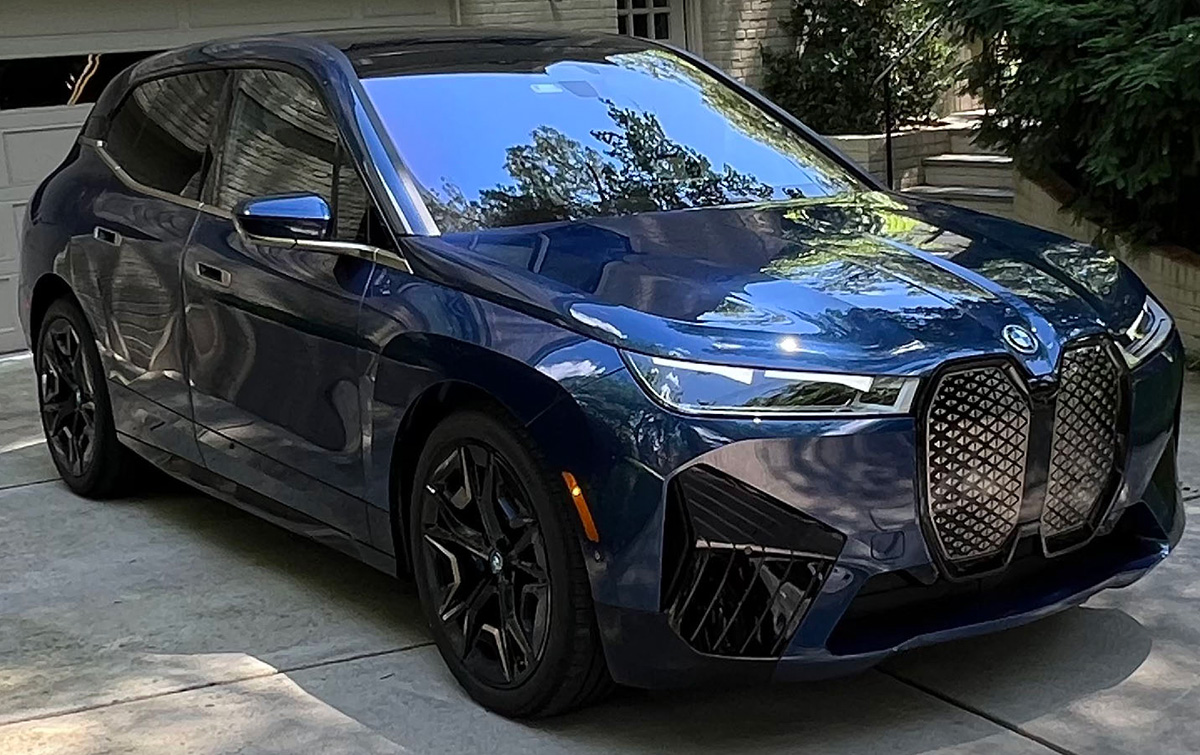
Price: $89,000-$113,000
Range: 288 to 324 miles
0 to 60 mph: 4.0 seconds
Cargo space: 35.5 cu. ft.
WHAT’S TO LIKE: Fun styling. Funky steering wheel. Floating center console. Oh, and cameras, radar and other sensors hidden in the grille, which has a special coating to magically erase minor scratches and dings. I was blown away when the BMW iX debuted in 2022. Three years later, the thrill is still there. Acceleration, cornering and braking? All breathtaking, in both the base model xDrive50 and high-test M60. Gizmos now include eye-tracking software so you can change lanes simply by glancing toward one of the side-view mirrors. An expansive digital monitor above the dash holds both a 14.9-inch infotainment display and 12.3-inch digital gauge cluster. And many materials — such as carpet and floor mats — are recycled. A truly eclectic electric? You bet.
CADILLAC LYRIQ (midsize SUV)

Price: $60,000-$70,000
Range: 314 miles
0 to 60 mph: 5.7 seconds
Cargo space: 28.0 cu. ft.
WHAT’S TO LIKE: If a BMW iX is cutting edge (say, like “Transformers One”), then a Cadillac Lyriq is old-school cool (a la “Deadpool & Wolverine”). Handsome design. Familiar feel. Quiet cabin. Handling is more affable than athletic. Ditto the acceleration. The land-yacht aura extends to the seats, which are cushy instead of taut. For older — er, more mature — drivers, this is a plus. But there’s plenty of tech here, too: 33-inch digital display, tri-zone climate control, hands-free driving, wireless charging pad and so on. When first sliding behind the wheel, I wished the navigation/infotainment interface was more intuitive. But a stellar voice-assistant system more than made up for it.
KIA EV 9 (large SUV)
Price: $57,000-$76,000
Range: 230 to 304 miles
0 to 60 mph: 4.9 seconds
Cargo space: 20.2 cu. ft.
WHAT’S TO LIKE: A cyborg in the city? With Robocop styling and Tron-like finesse, the Kia EV9 looks and feels out of this world. Three-row seating, with scads of passenger room. Lowering all the rear seats expands cargo capacity to fit more than 15 suitcases. And unlike most EVs, the EV9 can tow up to 5,000 pounds. Yet the hulky hauler behaves like a nimble ninja, easily darting in and out of traffic. At almost 6,000 pounds, the King Kong Kia is three tons of fun —literally. There are so many creature comforts — self-leveling suspension, ambient lighting, massage seats, rear-window shades, 14-speaker Meridian audio—you would think this was a Range Rover.
MERCEDES EQE (midsize SUV)
Price: $80,000-$110,000
Range: 265 to 307 miles
0 to 60 mph: 5.6 seconds
Cargo space: 14.0 cu. ft.
WHAT’S TO LIKE: Luxury is as luxury does and Mercedes does luxury well. With a dashing design, silken ride and hushed interior, the EQE sets a high bar. Four trim levels, including the awe-inspiring AMG with 617 horsepower. Everything is state-of-the-art: powertrains, suspension, safety, multipixel headlights, cabin air purifier, Burmeister stereo and more. An augmented-reality nav system monitors traffic, weather and such, then conveys this info into graphic overlays on the head-up display. And the standard faux leather seats? They look and feel like the real thing. One downside: minimal cargo space. But then, there’s always a full-size EQS topping out at $180,000.
NISSAN ARIYA (compact SUV)
Price: $40,000-$56,000
Range: 205 to 289 miles
0 to 60 mph: 7.5 seconds
Cargo space: 22.8 cu. ft.
WHAT’S TO LIKE: Cute, compact, comfy. It’s easy to like a Nissan Ariya, with its cheeky exterior, composed handling and low price. Choice of two battery packs, as well as two-wheel or all-wheel drive. Base-model pricing is hard to beat, but beware the tradeoffs: pokey acceleration and reduced range. Luckily, the other trim levels offer more oomph. All Ariyas come loaded: LED headlights, heated steering wheel, heated front/rear seats, nav system, head-up display and lots of safety gear. Notable options: panoramic sunroof, hands-free liftgate, limited hands-free cruise control, automated parking and illuminated kick plates. Overall, I found the ride smooth, though not sporty. Racing mavens may want to look elsewhere, but it’ll cost you.
SUBARU SOLTERRA (compact SUV)
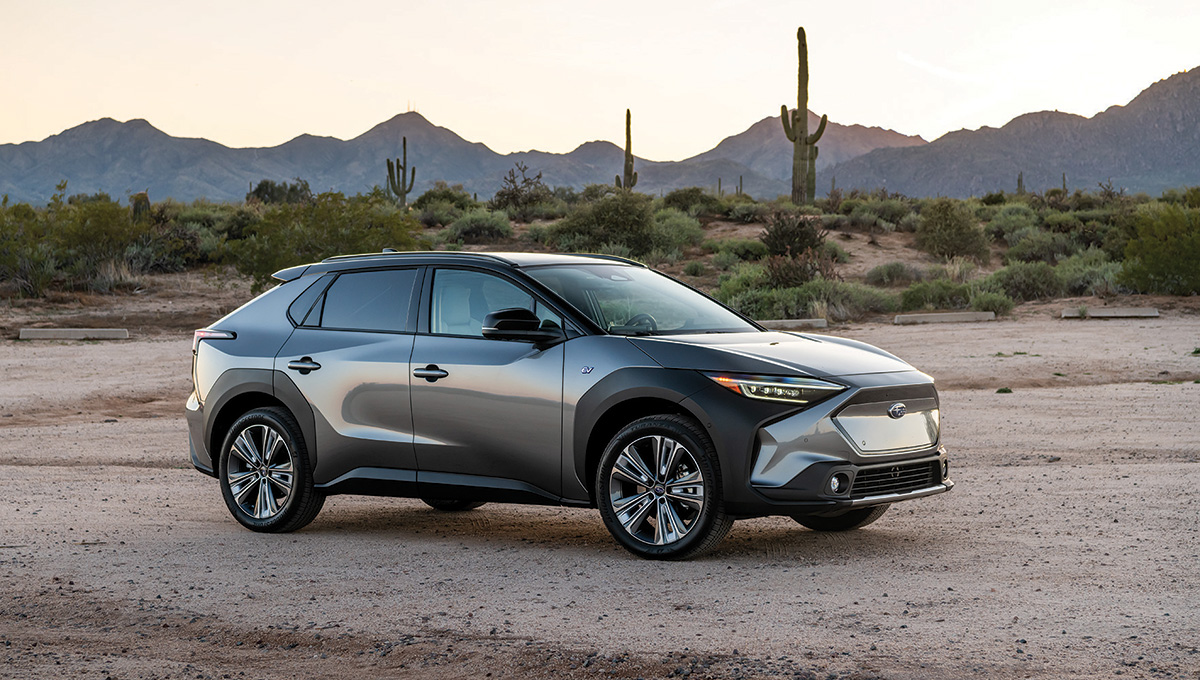
Price: $40,000-$47,000
Range: 222 to 227 miles
0 to 60 mph: 6.1 seconds
Cargo space: 27.7 cu. ft.
WHAT’S TO LIKE: The first EV from Subaru — the Solterra — boasts origami-like flair. Built in tandem with the quirkily named Toyota bZ4X, both SUVs fall a bit short in battery range —less than 230 miles. But the Solterra comes standard with all-wheel drive, roof rails and front cross-traffic alert. Plus, it now has faster charging times, as well as hands-free driving at up to 25 mph and an automatic lane-changing system used in conjunction with the turn signal. While not a true off-roader, this “Subie” has above-average ground clearance — 8.3 inches — to better tackle snow and potholes. And I liked all the storage compartments, along with dual-level cargo floor to fit extra luggage.
-

 District of Columbia5 days ago
District of Columbia5 days agoFinal push to raise funds, fill D.C. hotels as WorldPride nears
-

 El Salvador3 days ago
El Salvador3 days agoGay Venezuelan makeup artist remains in El Salvador mega prison
-

 District of Columbia4 days ago
District of Columbia4 days agoReenactment of 1965 gay rights protest at White House set for April 17
-

 Maryland5 days ago
Maryland5 days agoFreeState Justice: Transgender activist ‘hijacked’ Moore’s Transgender Day of Visibility event

